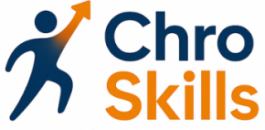
Understanding the Strategic Role of a CHRO
Strategic Vision and Alignment
The role of a Chief Human Resources Officer (CHRO) extends far beyond traditional HR functions. At its core, it involves aligning the human resources strategy with the overall business objectives. This requires a deep understanding of the company's mission and goals, as well as the ability to translate them into actionable HR plans. A CHRO must be adept at unlocking the potential of the workforce through strategic initiatives that drive performance and growth.
Data-Driven Decision Making
In today's data-driven world, a CHRO needs to leverage data analytics to inform decisions and predict trends. This includes understanding workforce analytics, employee engagement metrics, and performance data to make informed decisions that enhance productivity and employee satisfaction. Utilizing tools and software development projects can help in gathering and analyzing this data effectively, allowing CHROs to anticipate future needs and challenges.
Integration of Technology
Technology is a critical component in modern HR management. From app development for employee engagement to implementing full stack web development solutions for HR systems, a CHRO must be comfortable with various programming languages and software tools. This technological fluency not only improves efficiency but also enhances the user experience for employees interacting with HR systems.
Collaboration with Leadership
A successful CHRO collaborates closely with other members of the executive team. This collaboration is essential for ensuring that HR initiatives are in sync with the company’s strategic direction. By engaging in project management and system design discussions, CHROs can better integrate HR strategies with business operations, leading to a more cohesive and effective organizational structure.
Essential Leadership Skills for a CHRO
Leadership Qualities that Drive Success
In the ever-evolving world of human resources, the role of a Chief Human Resources Officer (CHRO) demands a unique blend of leadership skills. A CHRO must not only manage HR operations but also influence the strategic direction of the organization. This requires a deep understanding of the business landscape and the ability to align HR initiatives with broader company goals.
Communication and Influence
Effective communication is at the heart of successful leadership. A CHRO needs to articulate the vision and mission of the HR department clearly, ensuring alignment with organizational objectives. This includes engaging with employees at all levels and fostering an environment where open dialogue is encouraged. Influencing key stakeholders, from the C-suite to team leads, is essential for driving initiatives that support the company's strategic objectives.
Strategic Thinking and Decision Making
Strategic thinking is a critical skill for any CHRO. This involves analyzing data-driven insights to make informed decisions that impact the workforce and the organization's future. A CHRO must be adept at using project management tools and systems design to implement HR strategies that are not only effective but also sustainable over time. Embracing a data-driven approach allows for better forecasting and planning, ensuring the HR department is proactive rather than reactive.
Adaptability and Change Management
In today's fast-paced business environment, the ability to adapt to change is paramount. A CHRO must lead by example, demonstrating flexibility and resilience in the face of organizational shifts. This includes guiding the company through periods of transformation, whether it's integrating new technologies like app development platforms or adopting best practices in web development. A deep dive into change management strategies can equip a CHRO with the tools needed to navigate these challenges effectively.
Building a Collaborative Culture
Creating a culture of collaboration is vital for any organization. A CHRO should foster an environment where teamwork and cooperation are prioritized. This involves working closely with software developers, stack developers, and other tech teams to ensure that HR initiatives support the overall user experience. By promoting a collaborative atmosphere, a CHRO can enhance workplace dynamics and drive innovation.
For more insights on enhancing workplace dynamics, explore the role of a Chief Human Resources Officer in depth here.
Navigating Organizational Change
Steering Through Organizational Shifts
The role of a Chief Human Resources Officer is pivotal when it's time to navigate the intricate landscape of organizational change. Such transitions demand a deep understanding of both the company's strategic goals and the diverse perspectives of its employees. At the heart of this process is unlocking the potential within each team member.
Organizational change often involves integrating new technological advancements, such as the adoption of software development tools. A CHRO should possess a solid grip on data driven decision-making and the transformative impact of web development platforms like full stack development and open source solutions. With these skills, they can effectively align system design objectives with employee workflows, balancing strategic innovation with practical implementation.
The Interplay of Projects and People
Managing change also requires effective project management skills, ensuring all initiatives are aligned with both company objectives and employee engagement strategies. For CHROs, understanding user experience is crucial, especially when introducing new programming languages or app development platforms. By doing so, they maintain high levels of productivity and morale amongst their software developers and other staff.
Further, adapting to change includes fostering an environment where your workforce can freely explore and develop skills related to programming and spring boot. Providing pathways for employees to dive into these areas can lead to a richer, more data driven culture, ultimately enabling everyone to thrive amid changes.
Building a Culture of Diversity and Inclusion
Fostering an Inclusive Environment
Building a culture of diversity and inclusion is a cornerstone for any Chief Human Resources Officer (CHRO) aiming to enhance organizational effectiveness. This involves more than just understanding demographic data; it requires a deep dive into the cultural fabric of the organization. A CHRO must leverage data-driven insights to identify gaps and opportunities for fostering an inclusive workplace.
To achieve this, CHROs should focus on:
- Development of Inclusive Policies: Crafting policies that promote equal opportunities and prevent discrimination. This involves collaborating with software developers to create systems that monitor and report diversity metrics effectively.
- Training Programs: Implementing comprehensive training programs that educate employees about unconscious bias and cultural sensitivity. These programs should be designed using best practices in user experience and system design.
- Engagement Initiatives: Encouraging employee resource groups and diversity councils to provide a platform for underrepresented voices. This is where project management skills come into play, ensuring these initiatives are well-organized and impactful.
Utilizing Technology for Inclusion
In the age of technology, CHROs have a wealth of tools at their disposal to enhance diversity and inclusion efforts. From app development to open source software, technology can play a pivotal role in creating a more inclusive work environment. For instance, web development platforms can be used to create interactive training modules, while full stack developers can help integrate these solutions into existing HR systems.
Furthermore, utilizing data driven approaches can help CHROs track the effectiveness of their diversity initiatives over time. By analyzing source code from various HR applications, CHROs can gain insights into employee engagement and satisfaction levels, allowing them to make informed decisions that align with the organization's strategic goals.
Commitment to Continuous Learning
Finally, a CHRO must be committed to continuous learning to stay ahead in the ever-evolving landscape of diversity and inclusion. Engaging in career development courses and workshops can provide valuable insights into emerging trends and best practices. This commitment not only enhances the CHRO's skills but also sets a precedent for the entire organization, fostering a culture that values growth and inclusivity.
Leveraging Technology in HR
Embracing Technological Advancements in HR
In the rapidly evolving world of human resources, leveraging technology is not just an option but a necessity for a Chief Human Resources Officer (CHRO). The integration of technology into HR practices can streamline processes, enhance decision-making, and ultimately drive organizational success.
Utilizing Data-Driven Insights
Data is a powerful tool in the hands of a CHRO. By adopting data-driven strategies, HR leaders can make informed decisions that align with the company's goals. This involves analyzing employee data to identify trends, improve workforce planning, and enhance employee engagement. Tools that offer real-time analytics can provide insights into employee performance and satisfaction, allowing for more effective management of human capital.
Implementing HR Software Solutions
Software development has paved the way for a variety of HR solutions that can automate routine tasks, freeing up time for strategic initiatives. Whether it’s through app development for employee self-service portals or implementing full stack web development projects for recruitment and onboarding, these tools can significantly enhance efficiency. Open source solutions and custom software can also be tailored to meet the unique needs of an organization, ensuring a seamless user experience for both HR professionals and employees.
Enhancing User Experience with Modern Tools
Modern HR tools are designed with the user in mind, focusing on improving the overall experience for both employees and HR professionals. By investing in systems that prioritize user experience, CHROs can ensure that their teams are equipped with the best practices in project management and system design. This not only improves productivity but also enhances the overall workplace environment.
Fostering Continuous Learning and Development
Technology also plays a crucial role in continuous professional development. Online courses and learning platforms offer opportunities for skill enhancement in areas such as programming languages and project management. By promoting a culture of continuous learning, CHROs can ensure that their teams remain competitive and adaptable in an ever-changing business landscape.













